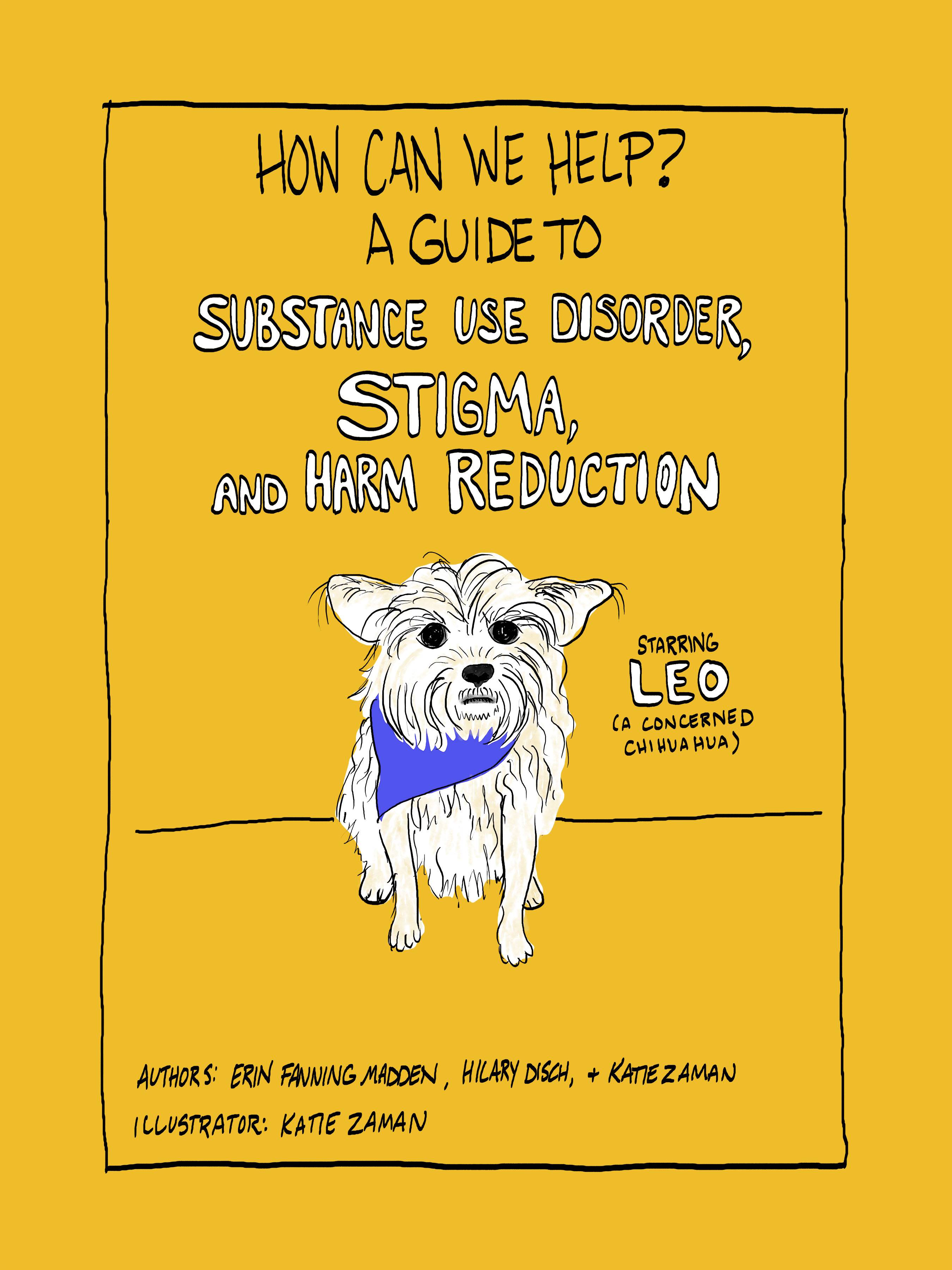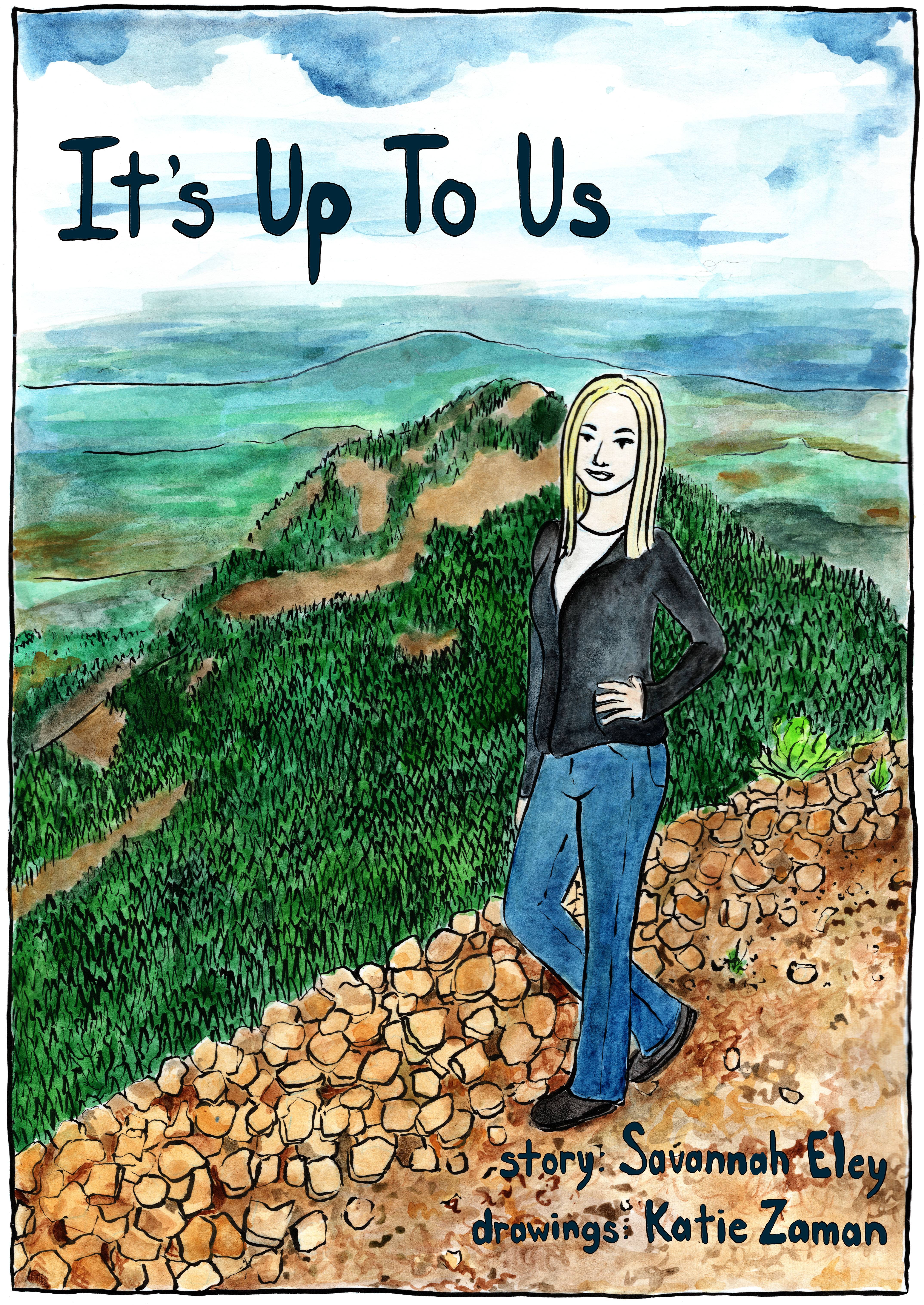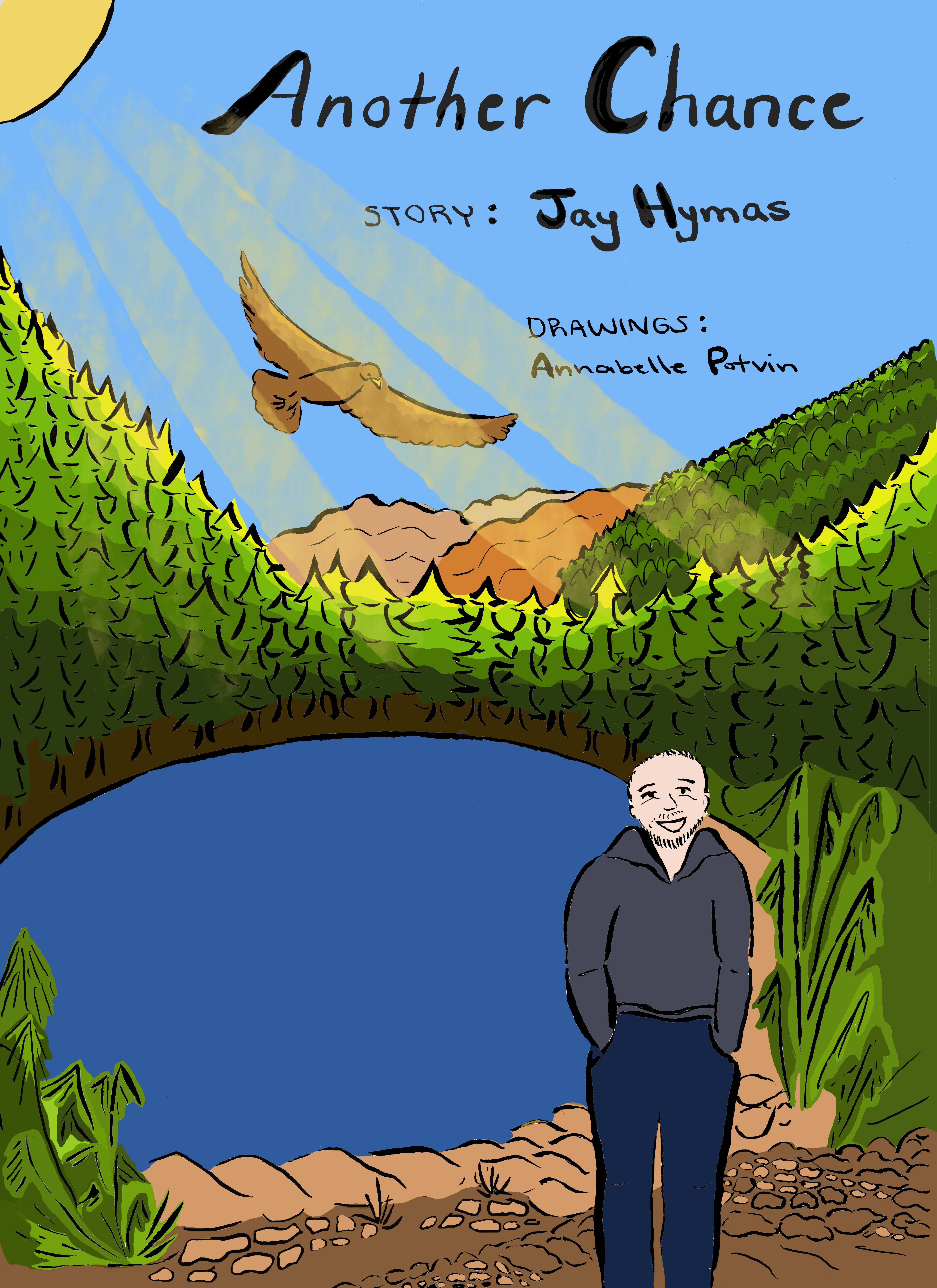The graphic novels in the series are based on personal experiences of Utahns with substance use disorder. They are stories of hope, stigma, and recovery. When someone discloses their struggles with substances they are often stigmatized by family, friends, and even health care providers. One way to reduce this troubling effect is to make connections with those that have been stigmatized. Learning about others' personal experiences can help to restore their humanity and help decrease prejudice, harmful assumptions, and discriminatory actions. Comics are one way to provide this connection. To learn more about this people-first project, read the Voices of Resiliency foreword to the five volumes; and check out the afterword to discover ways you can engage in harm reduction community-based work in your community.
How Can We Help? A Guide To Substance Use Disorder, Stigma, and Harm Reduction
Erin Fanning Madden, Hillary Disch, Katie Zaman
This guide is meant to help people understand the role of stigma in preventing people from accessing recovery resources. It provides an overview of harm reduction strategies and explains best practices to support people with substance use disorders to use substances more safely and to help them understand options for treatment and recovery. How Can We Help? is in graphic novel format and follows Erin, Hilary, and Leo the Chihuahua as they travel to beautiful destinations in Utah and talk about these topics.
It's Up To Us
Savannah Eley
This is a true story based on Savannah's journey through substance use disorder and recovery. Savannah suffered postpartum depression after her first child was born and found that her husbands opioid pills helped her cope. She developed an opioid use disorder, and later used methamphetamine to taper herself off opioids. She was left with a dependency to methamphetamine and Xanax. Savannah struggled with these substance use disorders and became suicidal, resulting in two attempts to die by suicide.
A kind police officer helped her by connecting her to resources and offering moral support. Today, Savannah is on the front lines, helping to connect people with substance use disorders in rural Utah to resources and recovery. She hopes that her story, It's Up To Us, will help others to see people that use drugs are worthy of compassion and respect.
Another Chance
Jay Hymus
This is a true story based on Jay's journey with substance use disorder and recovery. To cope with the complex trauma he experienced growing up, Jay began using marijuana, alcohol, methamphetamine in early adolescence. He began using opioids at age 14, after injuring his eye while at school. As a minor, Jay became involved with the criminal justice system and was eventually placed in foster care. During this time he participated in mandated treatment programs that helped plant seeds for his later recovery. Jay hopes his story, Another Chance, will give hope and love to anyone that needs it, no matter where they are on their journey.
There Is Hope Out There
April Robinson
This is a true story based on April's experience with substance use disorder and recovery. April grew up in rural Utah with her big family and had a happy childhood. She first used opioids when she was in college when she cut her finger at work and was given a doctors prescription.April shares her story, There Is Hope Out There, so that others can learn from her experience the dangers of opioid use disorder, even if it is prescribed by a doctor, and her successful treatment with the medication suboxone.
What I Hold Sacred
Jessie Hakala
This is a true story based on Jessie’s journey through substance use disorder and recovery. Jessie developed an opioid use disorder when she needed pain pills for a back injury. When Jessie became pregnant with her second child, she tried to quit cold-turkey, but started again after he was born. She went to rehab, but wasn’t given information about medications for addiction treatment or harm reduction. She returned to use and started using heroin, which led to her husband kicking her out. Jessie’s use spiraled, and she became homeless, enduring assault and loss, until she finally ended up in jail. Jessie found strength in sharing her story, What I Hold Sacred, and is now in long term recovery, using her experiences to help others struggling with substance use disorder.
Harm Reduction Comic Book Groups
While each book can be digitally downloaded, we are happy to mail hard copy books at no cost. These books have been used in discussion groups in high schools, community events, and therapy groups by professionals and the general population alike. We hope to see these personal stories and the How Can We Help guide used to educate our communities on the importance of person-first language and harm reduction practices, as well as putting a face to substance use disorder through the personal stories.
Project Credits
We would like to extend a sincere thank you to those that contributed to the creation of "Voices of Resiliency: Utah Stories of Substance Use Disorder, Stigma, & Harm Reduction" graphic novel series. This project would not have been made possible without the support of individuals and organizations, who provided thier expertise, guidance, and resources to help us create comics that would be both informative and engaging. We hope that "Voices of Resiliency" will help promote person first language, reduce stigma, and encourage harm reduction practices within our communities.






